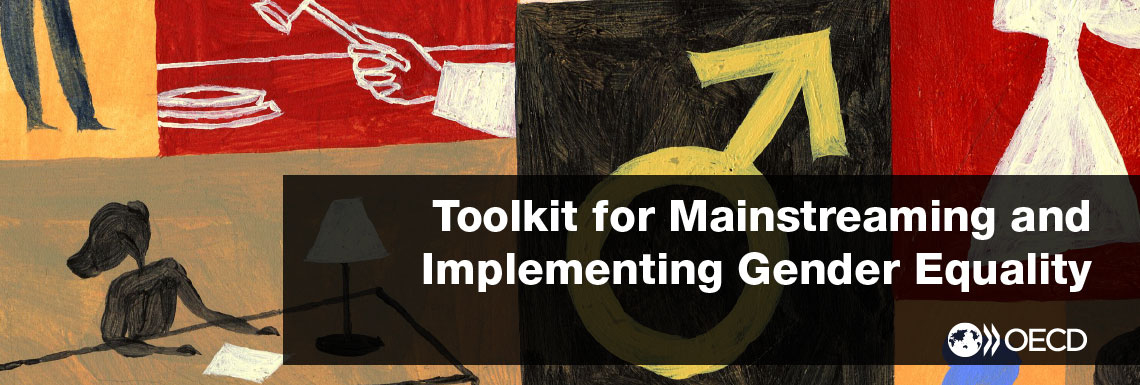Whole-of-government civil service legislation, policies, and values have clear and specific provisions for gender equality
SELF-ASSESSMENT QUESTION
- Is gender equality clearly and specifically referred to and defined in the country’s civil service legislation and public employment policies?
- Do the civil service values and principles integrate and promote gender equality in public employment?
WHY IS IT IMPORTANT?
Effective public employment gender equality policies and actions require:
- Strong political leadership, vision and commitment to gender equality;
- Whole-of-government civil service legislation and policies with specific provisions for gender equality;
- Civil service values and ethics code embedding provisions for diversity and gender equality.
Strong political leadership, vision and commitment to gender equality are important to set the tone and send a clear message. Government and political leaders should set an example by enhancing gender equality in their own political formations and in Parliament’s representation, as well as by making nominations that ensure equal access to the political executive, the judiciary, the senior civil service, the supreme audit bodies, etc.
Equal representation of men and women in the public sector is essential for gender-responsive policies and for quality service delivery. Diversity allows for more brainpower, ideas and approaches to identifying and solving problems. Fostering diversity in the public sector could help strengthen trust in government by portraying it as responsible, responsive and legitimate, and may also contribute to national cohesiveness.
A clear definition of gender equality as well as legally bound, clear expectations for a diverse public sector workforce and sound accountability measures are indispensable for gender equal public employment systems.
Strengthening fundamental civil service values and principles - such as merit, diversity, and representativeness - has very likely contributed to the increase in the number of women in public sector employment. Merit-based recruitment and promotion are essential for providing equal access to public employment and opportunities for career development and growth. Establishing institutional safeguards for civil service values and principles and associated accountability mechanisms is an important condition to their sustainability and vitality.
ACTIONS TO CONSIDER
- Developing a whole-of-government compelling, outcome-based vision for gender equality in the civil service, also as part of the broader efforts to promote inclusion and diversity;
- Integrating gender equality perspectives into the development of all civil service and public employment policies, regularly conducting gender-based analyses;
- Ensuring political commitment to civil service gender equality policies by engaging politicians and parliamentarians in the discussion and promotion of civil service gender equality legislation and policies, as well as their contribution to good governance;
- Engaging men and women in developing policies to ensure gender equality within public employment, providing all groups with opportunity to contribute their views;
- When designing civil service legislation and policies, developing a broader vision of diversity and gender equality, including, when appropriate, the examination of a range of other intersecting identity factors (such as age, cultural background, and ability);
- Ensuring that legislation and policy development with regard to gender equality in public employment are evidence-based, supported by recent and relevant data and research;
- Developing and promote policy mechanisms to continuously ensure universally safe, healthy and supportive work environments for all public servants, as well as mechanisms to enforce those provisions to be accessible to all;
- Regularly assessing the implementation of policies to foster gender equality within public employment based on relevant and up-to-date data and information;
- Highlighting the civil service’s merit and gender equality principles in public sector branding to attract new talent in public employment and encourage others to follow suit.
PITFALLS TO AVOID
- Putting in place legislation and policies to foster gender equality within public employment that go unheeded;
- Piecemeal approaches in public sector gender equality legislation and policy;
- Legislative and policy objectives that are unrealistic or vague;
- Adopting public sector gender equality legislation and policies that are not suited to the specific context of a country, region or organisation. Existing models should stimulate the consideration of new ideas, which countries adapt to their conditions;
- Engaging a limited range of traditional stakeholders, always listening to the same voices and avoiding new views and ideas while developing public sector gender equality legislation, policies and initiatives;
- Limited gender-based analysis skills and absence of mechanisms for monitoring the impact of gender equality and mainstreaming initiatives within the public sector.
COUNTRY EXAMPLES
Australia
The Australian Public Service has recently adopted its Gender Equality Strategy for 2016-2019. The Strategy notably addresses gender imbalance across Australian Public Service at all levels and in all agencies. It has a strong focus on leadership, flexibility in working arrangements, and innovation. The Strategy presents a new approach to implementing gender equality in the Australian Public Service combining culture change, practical initiatives, evaluation and showcasing best practices. The Strategy builds around five pillars:
- Driving a supportive and enabling workplace culture;
- Achieving gender equality in APS leadership;
- Working innovatively to embed gender equality in employment practices;
- Increasing take-up of flexible work arrangements by both men and women;
- Measuring and evaluating actions.
To support the implementation of the strategy, the Australian Public Service Commission has developed a practical implementation guide that comprises a toolkit. Resources, factsheets, tools and good practices are made available online to assist agencies and staff in strengthening and promoting gender equality in the workplace.

